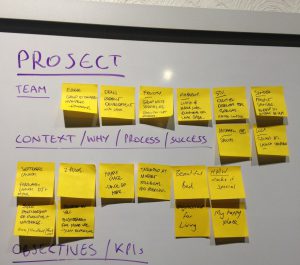
As a project manager, you’ll hear every excuse in the book as to why your resource can’t complete their task on time. ‚ÄòYou didn’t give me enough information.’ ‚ÄòI was pulled onto another task.’ ‚ÄòI didn’t think it would take this much time.’ At the end of the day, your resources shouldn’t be treated as robots. People get sick, provide incorrect estimates if they are rushed or can simply not deliver on time. By adding a buffer to your project plan you account for the ‚Äòresource unknowns’ that will likely popup and minimize rework that needs to be done to your timeline.
The overall purpose of adding a buffer to your schedule is to protect the project deadline. According to multiple studies performed for the traditional project management methods, only 44% of the projects finish in time. 70% of the projects reduce the amount of planned work, 30% of the projects simply die unrealized. Those are not reassuring statistics, but you can protect your precious project by adding buffer in 4 different ways.
Adding a buffer to your project plan will be your lifesaver
I recall asking one of the designers I was working with if he wanted more cushion added to his task because I wanted to help balance out his plate. ‚ÄòDon’t include buffer in your timeline. Make it realistic. We will deliver.’ We didn’t deliver. Someone on the team had a family emergency and I was glad I added the buffer to fall back on to buy the team extra time. I learned to add buffer as a second nature to each task in the timelines I create. I don’t necessarily add an additional month to each line item but 1-3 days can be a lifesaver, regardless of what your project team requests.
Add project resources as risks to your project plan
I always identify each separate project team as a risk in status updates I send out to my project stakeholders. Every team has a backlog of projects in the queue and availability to compete with. They too can fall ill or not deliver on time which can hinder the delivery of your project. To mitigate this risk, you can set a weekly 15 minute meeting with each team to review priorities and deadlines. This makes it really easy to escalate to your stakeholders when a deadline is fastly approaching since you identified your resource as a risk from the beginning. Your stakeholder can then choose to shuffle priorities or be prepared for a missed deadline since you raised the flag from the inset.
Make two timelines
It may sound cheeky and a little time consuming but one tip is to create two timelines. One timeline that is internal for the team working on your project and one that is external to your stakeholders. The timeline for your team shows the estimated time projected by each required resource. The timeline for your stakeholders holds the buffer as a safety net to capture the unknowns that could potentially creeps up. This saves you from having to update the timeline if a deadline is missed because it’s already accounted for with the buffer you added to your external timeline.
Not telling your internal team their real deadline can sometimes buy you time for the future. If you let your internal team rely on the buffer you added, they could start their task later thinking they have more than enough time. We’ve all done it at some point – something urgent pops up and you brush off the task you know you have more than sufficient time for. It will happen, and you will be the amazing project manager who can offer 1-2 additional days for them to complete their deliverable.
Historical data is your friend
Once you have been working with the same team for a while, you can can use historical data to help choose your team and keep the project on track. For example, if you know Designer A typically needs 2 additional days for the task he typically does but Developer B can reuse code from a similar completed project and they are available as a resource, this is a valuable way to keep your project on time and on budget. Remember how I stated that having weekly meetings with each project team? This is how you gain insight on what everyone is working on, what they are stuck on and if they have a new trend they want to try out. If you work with developers for example and they are providing you with an estimate, a valuable question to pose is, ‚ÄòIs anything you are building able to be repurposed for other sites or the development team?” This is a different way of thinking so your team doesn’t always produce ‚Äòthrow away’ solutions but also learnings that they can share with the wider team, learnings that can also cut time with your overall project.





